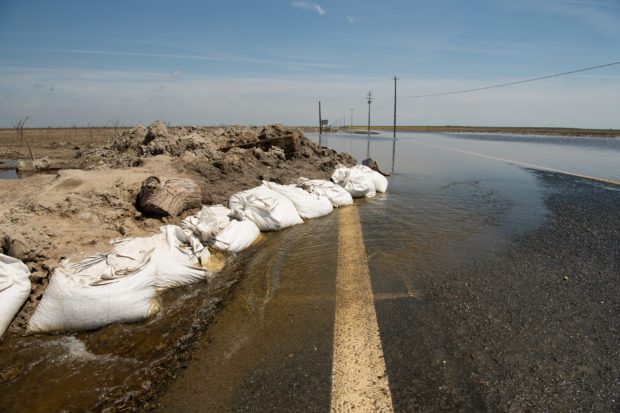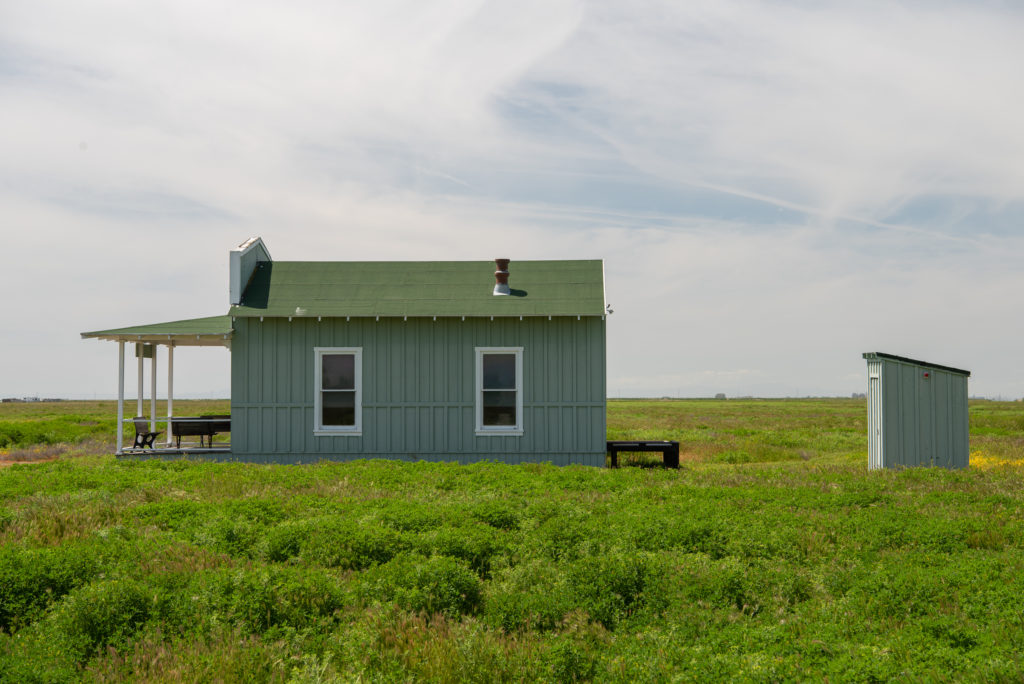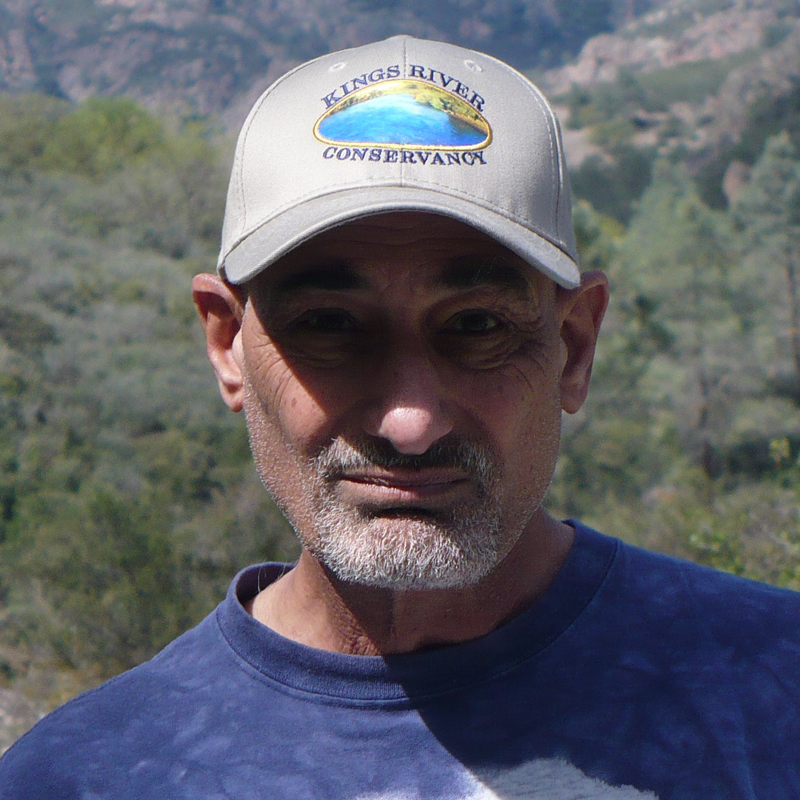

Overabundant flood waters from southern Sierra rivers have put some San Joaquin Valley communities in harm’s way. One such community is the historic town of Allensworth in Tulare County. Residents are scrambling for protection from the increased flooding that will come in the spring and summer.
Meanwhile, the farmlands that inhabit what used to be Tulare Lake are filling with runoff. That too is expected to continue as mountain snows melt. But Allensworth residents are not only wrangling with nature but also contending with corporate greed and insensitivity.
Allensworth is notable as the first Black township in California. It was founded in 1908 by a group of men led by Colonel Allen Allensworth as a farming community and educational center like the prestigious historic Black Tuskegee Institute. The town’s residents moved away as the water table sank and social discrimination rose.
Now the original site is a State Historic Park. Outside the park boundaries, the current residents of Allensworth are scrambling for survival. Their town’s elevation is 213 feet, the same as Tulare Lake’s shoreline before it was drained a century ago. It’s a small town of about 600 people that’s 97% Latino, mainly workers in the nearby fields and food processing plants. There are several African-American families living there as well.
Flooding from recent extreme rainstorms has led to the reemergence of what was the most expansive lake in the West, threatening Allensworth and neighboring Alpaugh.
Dezaraye Bagolayos is director of program development for the Allensworth Progressive Association. She cautions that the worst is yet to come, “We’re just in the beginning of the flooding season now.
“We know that we’re going to get a flood, and so we’re likely going to see the lake come back, especially with that snowpack. Right now the water that’s coming into the lake bed, that’s not even snowpack water.
“This is just the abundance of rain and the releasing of water from the rivers and the reservoirs.”
Allensworth is virtually surrounded by watercourses—the White River, Poso Creek and Deer Creek. The disaster scenario started in the middle of the night when an irrigation ditch along Deer Creek was intentionally breached to let water head toward town instead of flooding an agricultural field. An emergency was declared. Shortly after that, the rain swollen White River flooded, and Poso Creek as well.
Bagolayos says town residents were scrambling to protect what they could, but didn’t have the necessary resources available. “The thing is Allensworth and Alpaugh shouldn’t have been flooding already.
“And so, we increasingly have growers in the lake bed who are doing everything that they can to save their own land and their own crops, but that water has to go somewhere.
“So it’s going into the communities because the communities don’t have the same kind of budgets as pistachio growers or other growers in the lake bed to be able to build up protections around the communities.”
Tekoah Kadara is executive director of Allensworth Progressive Association. His relatives helped in the creation of the state park. He recalls the frightening events on the night of March 16, “Water was coming and nobody told us. Nobody told us they were letting water out of Lake Success. Nobody told us. We just find out ‘okay, it’s raining’ and all of a sudden ‘boom, we’re flooding.’”

That fateful night it became clear to town folk that they were on their own. One local farmer offered to pump water onto his land instead of letting it flood the town. He was the exception. Another farmer cut the levee holding back Deer Creek, thus releasing floodwater toward Allensworth and Alpaugh.
Meanwhile, agricultural giant J.G. Boswell, who owns most of the land for miles around, used a road grader to block water from going into the Homeland Canal, instead letting it flow toward town. In doing so, water was prevented from heading toward the lowest part of the old Tulare Lake bed where the corporation’s tomatoes were being planted.
Kings County supervisors were begging the unremorseful company to help staunch the floodwaters, but to little avail. That’s not surprising as the agricultural empire reportedly owns and operates 132,000 acres of farmland in the county, giving it a whole lot of political influence.
Just as Allensworth residents were desperately trying to save their town, the Burlington Northern Santa Fe (BNSF) Railway, with annual revenue in excess of $25 billion, blocked the White River channel running parallel to its tracks. Instead of letting water continue flowing through the canal, BNSF blocked a culvert and directed the surging water into a hard left turn so that it would run through a gap under the tracks and instead erode the levee that was keeping the town from flooding.
Townspeople, including Kadara, were incredulous, “They don’t want it to flood their tracks. But why would they allow it to go inside of a community?” That embankment was later bolstered when a Caltrans helicopter dropped huge sandbags where the riverbank was being eroded.
When contacted by the community, BNSF told residents to stay away from their property and focus on saving their individual homes instead of attempting to keep their town from flooding.
Later that night, people from town were piling rocks, plywood, anything they could muster to thwart water from another river canal from crossing under State Route 43 and into the main canal next to the railroad tracks.
Kadara recalls that “after we had done this, BNSF came and they harassed a couple of the people that were out here, and then one of their contractors came out here and removed all the stuff that we had here.”
What’s worse, the company even sicced the sheriff on people working to save their town using rocks that belong to BNSF, a corporation worth an estimated $200 billion. For Kadara, “It’s mind-boggling. How, where is humanity? Where is humanity? This is an absolute emergency?”
Partly to blame for the crisis, Kadara says, was that the banks of those channels were weakened over the years by a lack of maintenance. That situation is currently being remedied, “Cal Fire and other agencies around the state are shoring up these levees. They’re flying drones. They’re looking for weak points, and they’re taking care of some of this stuff.”
Kings County has since taken action to prevent the cutting of levees that could do damage. Cal Fire and the Red Cross are actively helping residents.
State agencies, at first, were straining to help with the recovery from all the storm damage throughout the state. Bagolayos confirms that after a slow initial reaction the agencies are now onsite trying to figure out how to handle far more runoff in the Tulare Lake basin when the Sierra snow melts.

“Karla Nemeth from DWR (California Department of Water Resources) was out at Colonel Allensworth Park and in the lake bed a couple days ago,” says Bagolayos. “I think there are about 20 different DWR engineers that are now in the lake bed looking at ways to potentially protect the communities from that snowmelt.
“And so, we’re working to reach out to all the local and state agencies that we can think of, and we’re trying to work with folks and see how we can protect both Allensworth and Alpaugh come April, May, June and July.”
Coast-to-coast headlines about a return of the legendary Tulare Lake cast shade on the reality of the Tulare Lake region today. It’s a basin of large farms and small towns, engineered so that rivers are supposed to be diverted. Natural waterways like the White River flowing toward the old lake bed through the Allensworth area have been tamed into a network of arrow-straight channels that direct water toward surrounding farmlands.
This year’s extreme rains have put that engineering to the test. Bagolayos asserts that despite the abundant water this year, the Tulare Lake of old has changed forever.
“I see lots of opportunity for identifying locations within the lake bed to where these activities could potentially happen,” notes Bagolayos, “but this cheering on of the entire lake coming back, it seems there’s a lack of understanding about who it’s affecting and who’s paying the price, and whose lives are being interrupted because of all of this. So, I would like people to have a better understanding of the lake coming back.”
Is the infrastructure to safely control the mega-flood flows expected in a few weeks up to the task? It presents a major hydrologic challenge to state agencies, reservoir operations and irrigation districts. That has Valley communities such as Allensworth concerned about the ability of those institutions to control flood waters or even to equitably decide where those floods will take place.

